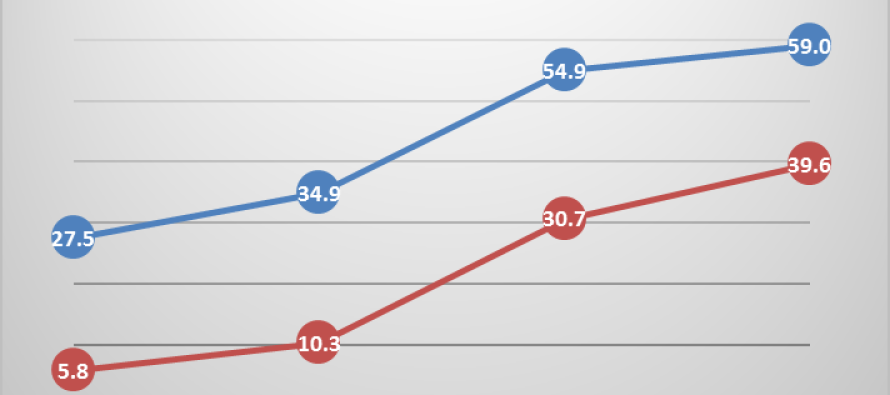Is My Soil Moisture Sensor Broke?

The importance of soil moisture sensors is becoming more evident as we continue forward this growing season. Today (Monday, June 16th), we received a call regarding sensor readings that were assessed early this morning. The following are the data discussed in this scenario:
6 inch depth = 32 cb
12 inch depth = 64 cb
24 inch depth = 112 cb
This information was collected following the 8 inches of rain received last week. One might wonder where all of the water went and why the sensor readings aren’t closer to 0 after such a large rainfall event. We have had a number of similar calls concerning what appear to be high sensor readings after a rain or irrigation event.
Silt loam and similar soil types have a tendency to seal over and compact. We are seeing a shallow compaction layer around the 2-3 inch range. This shallow compaction layer may be present even though the particular field was sub-soiled in the fall. 
The structure or “tilth” of the soil is a relationship between soil, organic matter, and pore space. Air and water fill these pore spaces. When these pore spaces become clogged, water movement is restricted and ponding occurs. If you notice areas of fields that tend to pond water after a rain or irrigation event, shallow compaction is most likely the cause.
We are investigating a number of methods to combat this issue. We have work in conjunction with Monsanto during the 2012-2013 growing seasons with promising results. The results are found by clicking here: 2012 , 2013 .
 We have a number of 2014 trials where we have tilled the soil at or near the lay-by timing with a Nichols parabolic anhydrous knife at a depth of 8 to 10 inches. Preliminary results show better infiltration rates than the untilled check. Where we have tilled at lay-by, sensor readings remain much lower, especially in the deeper regions, signifying much better infiltration rates.
We have a number of 2014 trials where we have tilled the soil at or near the lay-by timing with a Nichols parabolic anhydrous knife at a depth of 8 to 10 inches. Preliminary results show better infiltration rates than the untilled check. Where we have tilled at lay-by, sensor readings remain much lower, especially in the deeper regions, signifying much better infiltration rates.
Additionally, we are investigating placing surge valves in these situations. Surge valves, with their alternating wetting and soaking cycles are allowing better infiltration of the soil profile. During the advance cycle water is forced down the furrow at an increased flow rate. The soak cycle, approximately 75% of the advance cycle time, allows water to infiltrate the soil profile before the next advance cycle. We have a number of locations this year to investigate the utility of surge valves in these situations.




Let me tell You a sad story ! There are no comments yet, but You can be first one to comment this article.
Write a comment